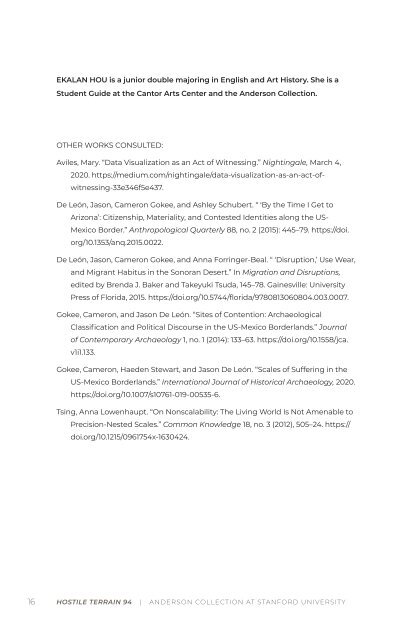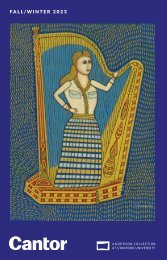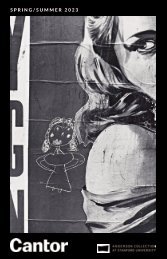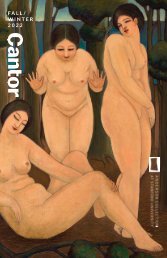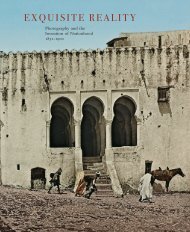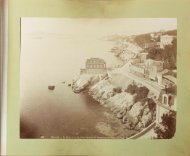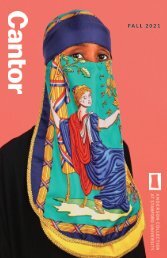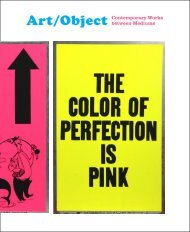Hostile Terrain 94
Hostile Terrain 94 is a participatory art project sponsored and organized by the Undocumented Migration Project. The installation is composed of more than 3,200 hand-written toe tags filled out by the community, each representing a migrant who has died trying to cross the US-Mexico border at the Sonoran Desert of Arizona between the mid-1990s and 2019. The exhibition is installed on the first floor and the accompanying publication was written by both graduate and undergraduate students at Stanford University.
Hostile Terrain 94 is a participatory art project sponsored and organized by the Undocumented Migration Project. The installation is composed of more than 3,200 hand-written toe tags filled out by the community, each representing a migrant who has died trying to cross the US-Mexico border at the Sonoran Desert of Arizona between the mid-1990s and 2019. The exhibition is installed on the first floor and the accompanying publication was written by both graduate and undergraduate students at Stanford University.
Create successful ePaper yourself
Turn your PDF publications into a flip-book with our unique Google optimized e-Paper software.
EKALAN HOU is a junior double majoring in English and Art History. She is a<br />
Student Guide at the Cantor Arts Center and the Anderson Collection.<br />
OTHER WORKS CONSULTED:<br />
Aviles, Mary. “Data Visualization as an Act of Witnessing.” Nightingale, March 4,<br />
2020. https://medium.com/nightingale/data-visualization-as-an-act-ofwitnessing-33e346f5e437.<br />
De León, Jason, Cameron Gokee, and Ashley Schubert. “ ‘By the Time I Get to<br />
Arizona’: Citizenship, Materiality, and Contested Identities along the US-<br />
Mexico Border.” Anthropological Quarterly 88, no. 2 (2015): 445–79. https://doi.<br />
org/10.1353/anq.2015.0022.<br />
De León, Jason, Cameron Gokee, and Anna Forringer-Beal. “ ‘Disruption,’ Use Wear,<br />
and Migrant Habitus in the Sonoran Desert.” In Migration and Disruptions,<br />
edited by Brenda J. Baker and Takeyuki Tsuda, 145–78. Gainesville: University<br />
Press of Florida, 2015. https://doi.org/10.5744/florida/9780813060804.003.0007.<br />
EMBODIMENT: MANUEL NERI, HOSTILE<br />
TERRAIN <strong>94</strong>, AND THE DEPICTION OF<br />
VIOLENCE IN ART<br />
MELISSA SANTOS<br />
The human body has long been used in art to explore the human<br />
condition—life and death, the personal and the political. In paintings<br />
and in sculpture, the depiction of the body beckons us to reflect on<br />
our own fragility and humanity. Manuel Neri’s life-size sculptures of<br />
women in plaster are an example of an artist’s attempt to capture body<br />
language and movement. The textured surface of pieces like Marble Relief<br />
Maquette No. 3 (1983) (fig. 3) and Standing Figure II (1982) (fig. 4) evidence<br />
his handiwork and evoke a profound emotional response; the sculptures<br />
convey the sense of intimacy Neri felt with his subjects, such as his lifelong<br />
muse, Mary Julia Klimenko, who posed for both aforementioned works. 1<br />
Gokee, Cameron, and Jason De León. “Sites of Contention: Archaeological<br />
Classification and Political Discourse in the US-Mexico Borderlands.” Journal<br />
of Contemporary Archaeology 1, no. 1 (2014): 133–63. https://doi.org/10.1558/jca.<br />
v1i1.133.<br />
Gokee, Cameron, Haeden Stewart, and Jason De León. “Scales of Suffering in the<br />
US-Mexico Borderlands.” International Journal of Historical Archaeology, 2020.<br />
https://doi.org/10.1007/s10761-019-00535-6.<br />
Tsing, Anna Lowenhaupt. “On Nonscalability: The Living World Is Not Amenable to<br />
Precision-Nested Scales.” Common Knowledge 18, no. 3 (2012), 505–24. https://<br />
doi.org/10.1215/0961754x-1630424.<br />
Toe tags, <strong>Hostile</strong> <strong>Terrain</strong> <strong>94</strong> at the Anderson Collection {detail}, 2020<br />
____________________________________________________<br />
1<br />
Sidney Simon, “Standing Figure II,” Anderson Collection at Stanford University website, accessed<br />
July 21 2020, https://anderson.stanford.edu/collection/untitled-standing-figure-by-manuel-neri/.<br />
16 HOSTILE TERRAIN <strong>94</strong> | ANDERSON COLLECTION AT STANFORD UNIVERSITY HOSTILE TERRAIN <strong>94</strong> | ANDERSON COLLECTION AT STANFORD UNIVERSITY 17


